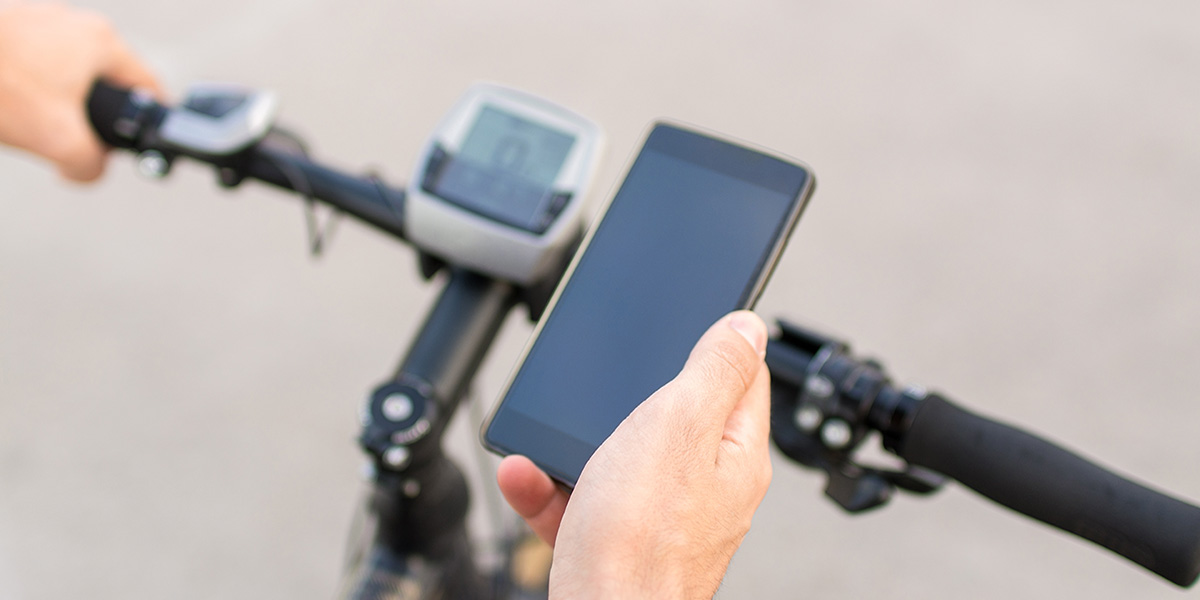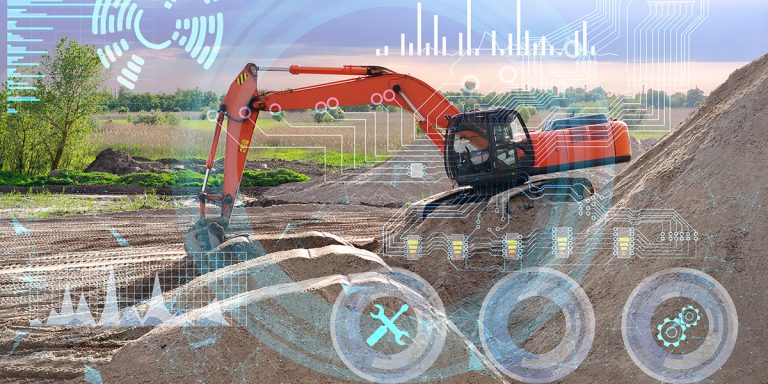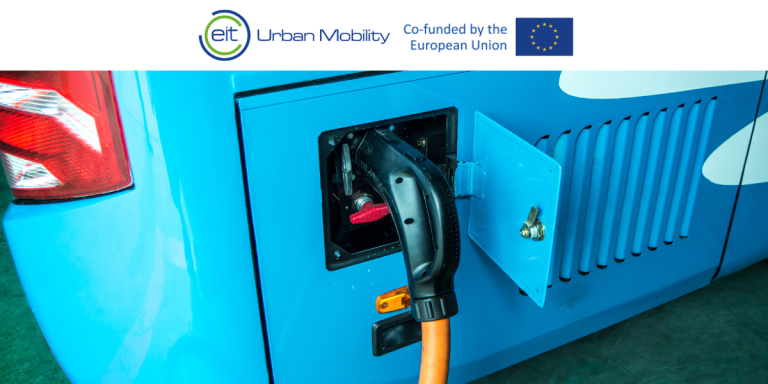Electrically Assisted Pedal Cycles (EAPCs) are an eco-friendly and cost-effective transport solution, and their connectivity, made possible through BLE (Bluetooth Low Energy) technology, offers a number of benefits. Users can access a range of useful information in real time, such as battery life, distance covered, speed, weather, etc.
This is why ACTIA, as an expert in on-board telematics, offers solutions for electric bikes that go far beyond simple assistance. Thanks to its extensive experience in system data acquisition and management, as well as its outstanding understanding of electronics and software, ACTIA’s solutions for connected electric bikes offer maximum suitability and efficiency. Here they are in detail.
The connected electric bike’s dashboard
Regardless of the smartphone model used, the cyclist can display all the information necessary for their journey via the e-bike app on a single user-friendly screen. ACTIA’s micromobility web platform supplements the service with remote access to data.
The e-bike app
The ACTIA E-Bike app (available on iOS and Android) allows cyclists to monitor the status of their EAPC in real time, without having to connect it. It accesses the system’s electronic parameters, such as battery, motor, controller and sensors, in order to monitor them and inform the cyclist when a visit to their dealer is required to prevent the bike from being immobilised. If necessary, a second, more accurate diagnostic level is available to determine the areas requiring servicing and prevent unnecessary loss of time.
The ACTIA app enables users to track and save their journeys in the same way as the popular sports and leisure apps. It also allows the log from these journeys to be used, providing detailed information such as route taken, average speed, duration, number of kilometres covered, calories consumed, weather, etc. Additional information can be added such as the name of the trip, the cyclist’s fitness, as well as photos, and the content can be shared with friends and family.
ACTIA’s micromobility web platform
ACTIA’s Micromobility web platform offers remote access to the electric bike’s diagnostic data and also displays the system’s software updates, by way of a single account. This platform complements the ACTIA E-Bike app, enabling EAPC fleet managers to track the condition of their bike fleet and keep it up to date on a centralised basis via an open API to connect to their own tools. In addition, a list of FAQs is available to help cyclists address common issues regarding use that they may encounter on a daily basis. This platform is essential to ensure optimal performance of the EAPC fleet and to provide a smooth user experience.
The display unit: key component of the connected electric bike
The display unit is a central component for EAPC cyclists, as it allows them to maximise the efficiency and comfort of their electric riding experience by providing important information about the condition of their bike.
ACTIA has demonstrated its expertise in data display systems, including dashboards for buses and industrial vehicles, and passenger information applications in passenger transport. These systems display information or technical data for user comfort. The ACTIA MMI ranges are permanently connected to the electronic system and on-board software in all electric bike conversion kits.
Advanced diagnostic features
The connectivity of electric bikes offers diagnostic features for both bikes and cyclists.
Connected electric bike self-diagnostics
Electrically assisted pedal cycles (EAPC) are machines that require regular maintenance to guarantee their performance and safety. The ACTIA mobile app performs a self-diagnostics test on the electric bike in order to quickly detect any problems.
By using ACTIA’s E-Bike smartphone app, cyclists can also monitor the statistics for their EAPC, including their battery range, speed and distance travelled. This helps cyclists plan the use of their EAPC more efficiently and optimise their riding time.
In short, EAPC self-diagnostics through the smartphone app are a practical innovation that help cyclists maintain their bike in perfect working order and make the most of their riding experience.
Cyclist self-diagnostics via heart monitoring
The EAPC’s dedicated smartphone app is not limited to self-diagnostics of the electric bike: it can also provide information about the cyclist’s health and performance.
The heart monitor function is used to measure the cyclist’s heart rate in real time, using sensors located on the EAPC’s handlebars or handlebar grips. The app can monitor the cyclist’s heart rate, pedalling rate and speed. The data is then analysed to provide accurate statistics on the cyclist’s performance.
This feature is particularly useful for cyclists who are trying to improve their physical fitness or meet specific training goals. The app can also provide personalised advice and recommendations to help cyclists achieve their goals. In short, cyclist self-diagnostics via the EAPC’s smartphone app are a practical innovation that help cyclists monitor their physical fitness and maximise their performance when in the saddle
Connectivity for the security of connected electric bikes
Electric bikes tend to be an expensive purchase, costing several hundred pounds, making them popular targets for thieves. This is why ACTIA has incorporated connected anti-theft and alarm features into its app.
Geolocation
These features include a global positioning system that enables owners to track the location of their bike in real time. The ACTIA anti-theft solution is tailored to the protection requirements of the EAPC market, as well as bike-sharing schemes, and is currently the only integrated electronic solution on the market.
ARGOS tags
More than just a tracker, the telematics tags pinpoint the EAPC at all times, and anonymously and securely transmit its operating data in real time. It is supported by a robust web platform, and is specially designed for manufacturers and fleet managers, who can access the status data for their fleet in just a few clicks. This means they can anticipate maintenance campaigns, prevent violations and antisocial behaviour, and optimise the availability of bikes for cyclists.
Collision radar
Collision-avoidance radar is an innovative safety feature that uses sensors to detect nearby obstacles and warn the cyclist in the event of a collision risk.
This is a particularly useful feature for cyclists riding in urban areas, where there is heavy traffic and collision risks are higher. This technology can also be used to improve the safety of cyclists riding on country roads or hiking trails, where the obstacles may be less obvious.
However, it is important to note that the collision-avoidance radar must not be relied on as a complete safety solution. Cyclists must always be vigilant and comply with road safety regulations to avoid accidents.
ACTIA designs and approves these accessories with the same high standards that it applies to its on-board electronic solutions to ensure the greatest reliability and quality.
- The numerous features offered by connectivity make connected electric bikes a real advantage for urban mobility:
- They facilitate everyday urban travel, while being more environmentally friendly to use;
- They also offer safety, health and well-being benefits.
With the rise of technology and connectivity, it is clear that the benefits of connected electric bikes will continue to increase in the years to come. ACTIA is also committed to this pathway to offer the best of electric bike connectivity.
Visit Micromobility website





